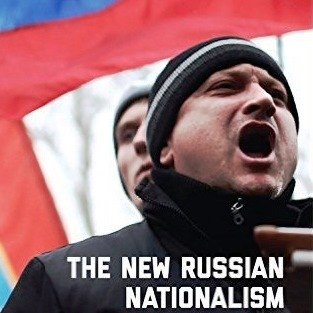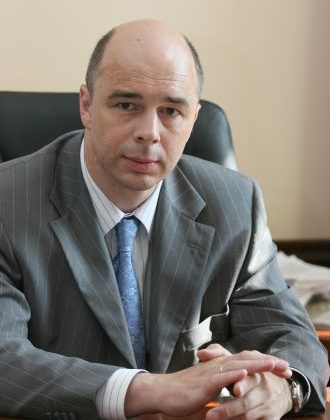(PONARS Eurasia Policy Memo) Over the past decade, Russia has launched a diplomatic and symbolic offensive in the Arctic, supported by increased military activity, grandiose economic plans, and showy assertions of sovereignty. Russian officials have increasingly portrayed the Arctic as the new frontier of a re-emerging Russia “standing up from its knees.”
Despite grand actions and even grander rhetoric, however, Russia’s Arctic adventures are no more than an extension of the Kremlin’s efforts to “simulate sovereignty”: the performance of symbolic acts designed to assert Russia’s international presence. As with its wars in Ukraine and Syria, Russia’s Arctic ventures are exercises intended to boost patriotism at home while keeping up great power appearances abroad.
A Symbolic Legacy
For centuries, the far north has held a mythological place in the Russian psyche. It is the great frontier: a place of adventure, symbol of territorial grandeur, and source of abundant resources. Russia’s Arctic odyssey dates back to early explorations of hunters, prospectors, and Cossacks in the sixteenth and seventeenth centuries, followed by the geographic discoveries of Vitus Bering and other eighteenth- to twentieth-century explorers. That the Arctic became an essential part of Russia’s identity is no surprise. Territoriality has traditionally played a major role in the construction of Russia’s political community and serves as one of the key markers of Russian statehood.
The Arctic’s symbolic significance and promise tend to prevail over any practical aspects. It has encompassed great geographic discoveries, stories of courage and sacrifice, civilizational outposts, but these represent historic lore, not economic gain. For a long while, Russians took pride in possessing the Arctic’s immense emptiness, and they have never been able to extract substantial material benefit from it. Russia’s far north differs from Siberia, which in the colonial past was a rich source of trade goods (such as fur). Russia’s Arctic regions provide fish, whale, walrus, and the like, but these have always been of regional rather than national significance.
The Soviet Union embarked on a major Arctic development program in the 1920s to the 1960s, and followed this up with large-scale oil and gas development. During the Cold War, the Soviet state also constructed extensive military infrastructure, including submarine bases, airfields, and radar stations.
Since the late years of the USSR, however, and especially since its demise, the significance and scope of Russian Arctic development has dramatically declined. The region began losing its military and strategic significance, which resulted in a drastic cut in funding and support for Arctic infrastructure. Military installations and mining facilities were abandoned, while towns and villages decayed. By the turn of the century, the Russian Arctic had become a giant frozen monument to failed modernization.
Rediscovering the Arctic
An upsurge in interest in the Arctic has occurred under Vladimir Putin. Under his watch, Russia has issued several policy documents prioritizing the Arctic. These include the 2008 Arctic Strategy, 2009 National Security Strategy, and a revised 2014 Military Doctrine tasking Russia’s armed forces with “ensuring the national interests of the Russian Federation in the Arctic.” A revised Maritime Doctrine, approved by Putin in July 2015, also places great emphasis on protecting Russian interests in the Arctic.
The key to Russia’s Arctic policy involves a legal claim concerning the demarcation of Exclusive Economic Zone (EEZ) boundaries, the delimitation of the continental shelf, and vessel transit in the Arctic. Moscow’s claim, originally submitted in 2001 and revised in February 2016, includes the Lomonosov and Mendeleev Ridges, which run toward the North Pole, the Sea of Okhotsk, and parts of the Barents and Bering Seas, roughly 1.2 million square kilometers in all. Citing a lack of sufficient data, the UN Commission on the Limits of the Continental Shelf (CLCS) rejected Russia’s initial claim in 2002. Since then, Moscow has prioritized gathering academic and scientific evidence to support its claims to both an extended EEZ in the Arctic Ocean and the Northern Sea Route. Russia’s claims to an extended EEZ overlap with claims made by Denmark, Canada, and the United States, meaning that for certain contested issues, the Lomonosov and Mendeleev claims in particular, resolution may be years away.
The Kremlin views the Arctic as its greatest resource base for the 21st century. It is particularly intent on developing new oil fields on the continental shelf. The Prirazlomnaya oil platform that was targeted by Greenpeace was supposed to be a showcase of this effort. Moreover, as global warming proceeds and the Arctic ice melts, Russian officials hope for the development of a Northern Sea Route (Sevmorput’) that will serve as an alternative shipping route between East Asia and Europe, cutting the traditional route via the Suez Canal by almost two weeks.
The Russian leadership also strongly believes in the security importance of the Arctic, as a future arena for major resource competition and even terrorist attacks. This idea, largely promoted by top security officials like Security Council secretary Nikolai Patrushev and FSB head Alexander Bortnikov, has led to support for increasing Russia’s military presence in the Arctic. This involves constructing new military bases and preparing the newly-created Arctic Brigade for deployment to any desolate northern shores. By 2018, Russia’s armed forces plan to construct new military bases on Cape Schmidt and the Kuril Islands, to support their existing base on Kotelny Island, and they also intend to double their military contingent on the Novaya Zemlya archipelago. These installations will form the infrastructure of a future Arctic Group of Forces.
The Arctic as a Symbolic Resource
In spite of these economic and military motivations, Russia’s Arctic policy remains mostly about symbolism. Putin’s outlook does not focus on geographic discovery and the expansion of Russia’s realm, as in imperial times, or reflect the Soviet Modernist zeal to inhabit and cultivate barren lands. For Putin, the Arctic is about restoring Russia’s great power status (derzhavnost’[1]) and coping with its overwhelming post-imperial ressentiment (resentment).
This is in line with the full array of Kremlin strategies and maneuvers of the last fifteen years that involve re-playing the end of the Cold War and healing the wounds of Soviet breakup. The Arctic fits this framework as a key arena to flex its military muscle, underline its resurgence as a great power, challenge international actors on the Arctic front, and ultimately return Russia to the “grand chessboard” of geopolitics.
Three symbolic episodes exemplify this symbolic approach to the Arctic. The first was the Arktika 2007 expedition, under the command of renowned Russian polar explorer and parliamentary deputy Artur Chilingarov, who planted a titanium Russian flag on the seabed of the North Pole. The August 2007 expedition was originally to be an international scientific adventure, but the Kremlin turned it into a part of its quest to substantiate its claim that the North Pole is an extension of Russia’s continental shelf. After the expedition, the government argued that seabed samples indicated that Russia’s Lomonosov ridge extends all the way to the North Pole.
A second episode was the September 2013 Arctic clash with Greenpeace. Activists on the boat Arctic Sunrise tried to board the Russian oil platform Prirazlomnaya in protest against oil drilling in the Arctic. Russia responded fiercely to this trespassing within its 200-mile exclusive economic zone. The ship was boarded by Russian commandos, and all crew members were arrested and charged with piracy.[2]
A third symbolic display of Russian sovereignty in the Arctic occurred the following month in the run-up to the Sochi Winter Olympics. The Olympic Torch, on its longest relay ever (including to space), was taken to the North Pole on a nuclear-powered icebreaker.
Russia’s Arctic Ambitions: Dead in the Water?
By 2016, Moscow’s grand Arctic plans had largely been shattered. First came the setback from the natural resource sector. The double blow of Western sanctions and lower oil prices meant that Russia could not secure the technology or know-how for Arctic oil drilling while losing the economic rationale for doing so; at the currently low (and supposedly lasting) prices, Arctic oil production is simply not profitable. In late September 2015, Royal Dutch Shell announced its withdrawal from Arctic projects in Russia, following a similar move by Exxon Mobil, Chevron, and BP. Russian oil companies have been left alone, with little available credit, no technology, and dim economic prospects.
Likewise, the Northern Sea Route has turned out to be commercially unviable. As Pavel Baev has observed, “old Soviet infrastructure along the Sevmorput’ is so rotten that navigation in the difficult northern waters remains too risky. Egypt, in the meantime, has swiftly constructed the New Suez Canal, which offers a far more reliable route for tanker and container traffic” from East Asia to Europe.
Finally, as Baev again notes, the Russian claim for the expansion of its continental shelf faces competing ones from Denmark and Canada. The Commission on the Limits of the Continental Shelf “cannot make a recommendation on competing claims unless parties agree on a compromise.”
All this leaves Russia with the solely symbolic rationale of boosting patriotism at home while keeping up great power appearances abroad.
Conclusion
Once again, as so often in the past, the Russian Arctic stands as an empty space that the state utilizes for symbolic exercises of sovereignty. It is a locus for identity construction and the territorialization of the national myth, evoking stories of sacrifice and national greatness. Putin skillfully utilizes this traditional rhetorical for national consolidation and power projection.
As political scientist Cynthia Weber has observed, “[I]t is no longer sufficient to ask ‘how is sovereignty represented?’ International relations scholars must move on to another question, ‘how is sovereignty simulated?’” This is relevant not only for understanding Russia’s Arctic policy, but also its actions in Ukraine and Syria. These have also been efforts to bolster national sovereignty through symbolic interventions—a proxy war in which Russian involvement was never officially acknowledged followed by a hi-tech air war in the Middle East. Russia’s symbolic expansion to the Arctic is yet another simulation of sovereignty, a symbolic exercise in diplomatic activity, territorial claims, and military buildup to fend off a non-existent enemy (except a boatful of Greenpeace activists).
In sum, Russia’s “fight for the Arctic” is a discursive decoy, yet another “Potemkin village” for which Russia has always been famous.
Sergei Medvedev is Professor of Political Science at the Higher School of Economics (Moscow).
[PDF]
[1] Roi, Michael L. “Russia: The Greatest Arctic Power?” The Journal of Slavic Military Studies, 23.4 (2010), p. 558.
[2] The crew was released in December 2013 and the ship was released in June 2014. In August 2015, the Court of Arbitration in The Hague ordered Russia to pay damages to the Netherlands over the seizure of the crew and ship.










